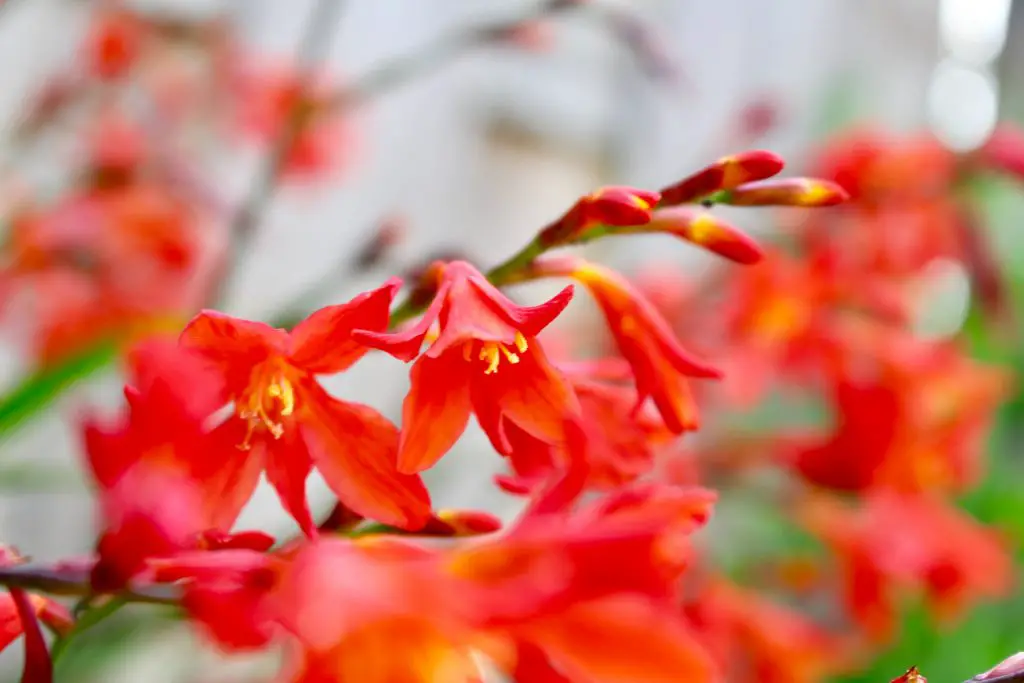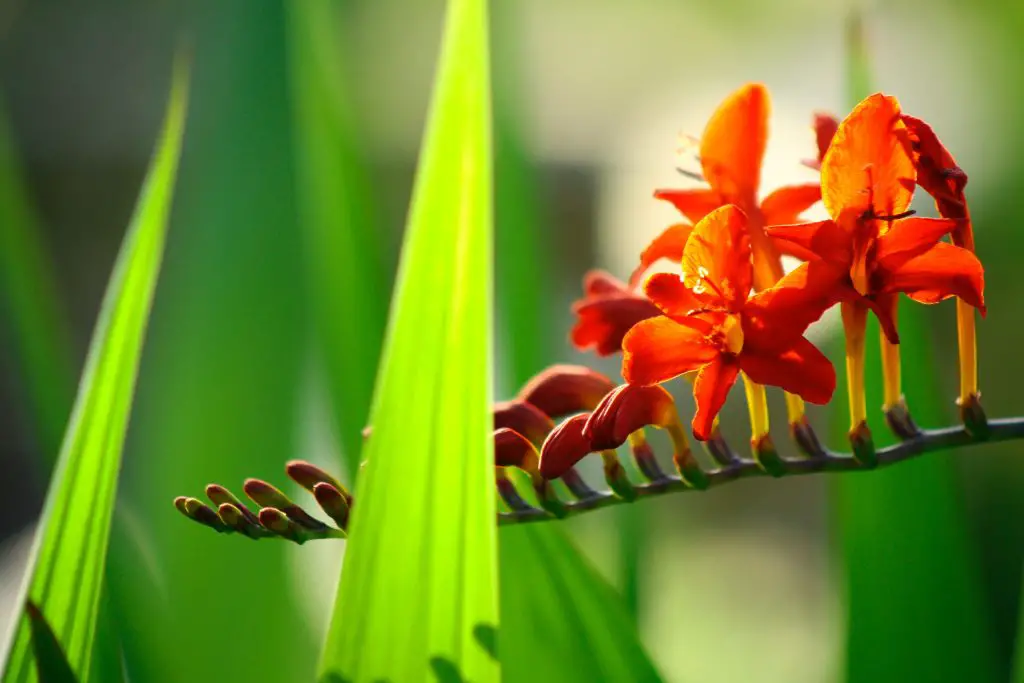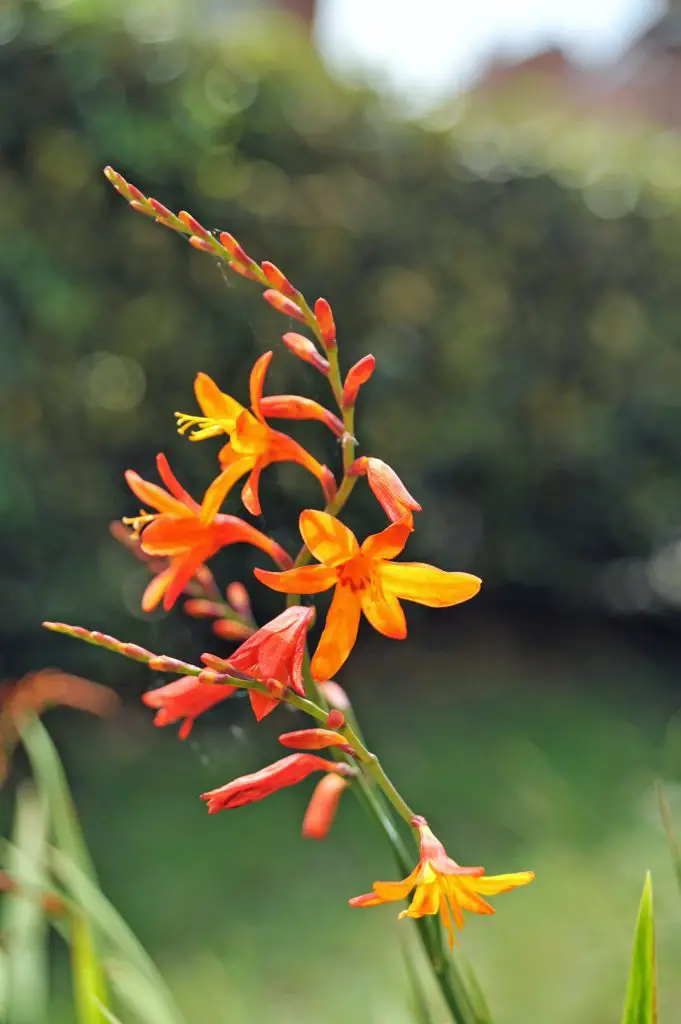Do Crocosmia Spread? Crocosmia is a popular plant that is often used in cottage gardens to give a little bit extra height as these plants can typically reach 3 to 4 ft tall with their strappy fine foliage and growth however a common question that is asked is do crocosmia spread readily?
Crocosmia is a plant that will multiply its corms in the ground producing dense bunches of growth, however, they do not readily spread across your garden. To need to replant the corms in new locations to encourage them to take up a greater amount of space in your garden. So you can plant them without worrying about them taking over your entire garden.
So they are an excellent option to place in your garden as they are relatively easy to grow and will produce a beautiful display every single year. It is generally recommended that you plant them toward the back of your borders to add interest to your garden. The flowers are typically available in reds and oranges with orange being the more common variety that appears in most gardens.

How To Grow Crocosmia
Crocosmia is a plant that is relatively easy to grow and requires little maintenance throughout the year. The corms of the plant should ideally be planted in spring once all risk of frost has passed. We recommend that you delay the planting of these combs if the soil remains relatively cool.
When planting crocosmia they should ideally be planted in a location that gets at least 6 to 8 hours of sun per day as any less sunlight will affect the number of flowers that you will get. When planting the corms they should be planted at a depth of approximately 2 to 3 inches deep with a spacing of approximately 6 to 8 inches. Most gardeners tend to plant several corms in the one area to create a bunch of crocosmia flowers which tends to have a much greater impact than having a plant by itself.
When planting the corms in the ground the pointy end of the corm should be facing upward. The soil should be placed around the corms and then firmed in. In terms of the soil conditions, like most plants, they prefer rich, moist, and free-draining soil that has plenty of nutrients in it. So if you’re unsure about the quality of soil you have you can always add an additional bag of compost.
The main areas to avoid are where water pools for long periods of time, particularly in winter, as that can result in the corm rotting.
Once the corms are in position in the ground it is advisable to add a thick layer of organic mulch which will have three benefits. It will help to retain moisture, suppress weeds, and also protect the crocosmia from the worst of the winter weather.

Caring For Crocosmia
Once the crocosmia is in the ground the most important thing is to ensure that you keep the soil moist but not damp by watering once a week during the growing season. If things are going well crocosmias will initially produce some sword-like foliage from the ground which will gradually rise up in height to 3 to 4 ft in height before producing flower spikes.
These flower spikes should be removed once they are finished blooming by cutting the stems at the point at which the flowers meet the leaves. Regular deadheading will encourage to plant to continue to produce flowers on an ongoing basis throughout the season so this is an important part of maintaining the plant.
Once flowering is completed it is important to leave the foliage from the crocosmia above the ground as this will continue to photosynthesize throughout the growing season which will allow energy to go back into the corms for next year’s blooms.
However, once the foliage has begun to die back you can cut it down to ground level and leave it for the winter. At this point in time is advisable to reapply another layer of mulch to protect the plant from the upcoming winter.
The rate of flowering that you can get from crocosmia will reduce over time once the corms begin to multiply in your garden. It is recommended that every three to 4 years you dig up the corms and replant them in other locations in your garden. Doing this will reinvigorate the plants ensuring that you have ongoing high-quality flowering.

Overwintering Crocosmia
Crocosmia is an extremely hardy plant that can be left in the ground if they are grown in zones 6 to 9 in most cases, however, there are some varieties that are a little bit hardier than that and can survive in zone 5.
However, if you live in a colder location and you want to ensure that you have crocosmia plants for next year it is important to dig up the corms just before the first frost and store them in winter before replanting them into the garden the following spring.
When removing crocosmia from the garden is important to be careful not to damage the corms as you remove them from the ground. We generally recommend that you dig around the corms about 1ft from them and then progressively lift them gently by placing the spade underneath the corms to reduce the chances of slicing them and half.
Once the corms have been successfully removed from the ground the next step is to ensure that any loose soil is removed with a brush to ensure that you do not have any problems with rotting or fungal diseases. The corm should be stored in a dry cool place that is between 35 to 45F as this will ensure that they remain in good condition for the following year.
I hope you found this article useful and have great success growing your crocosmia at home in your garden if you have any additional comments or questions please leave them in the section below.
Relevant Articles
Why Is My Crocosmia Not Flowering? What Can I Do To Fix It?
Is Crocosmia Deer Resistant? What Can You Do To Protect The Plants?
Are Asters Deer Resistant? What Can You Do To Protect Them?

